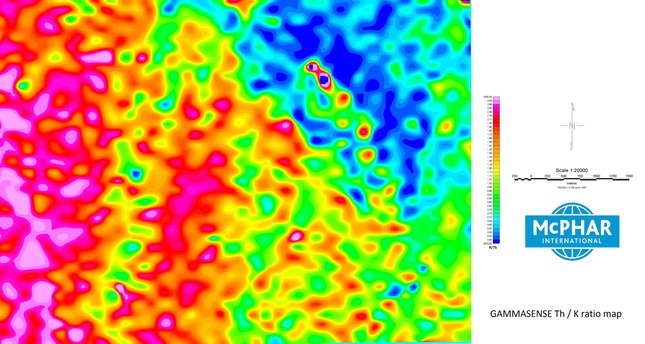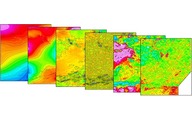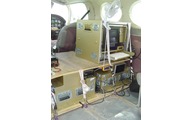
GAMMASENSE

GammaSense is a proven radiometric mapping system that can detect subtle characteristic radiation patterns as indicators of subsurface hydrocarbon accumulations over petroliferous terrane.
GammaSense surveys are conducted with a multi-channel gamma-ray spectrometer system and a large volume gamma-ray sensor (33.6 to 50.4 litres of NaI(TI) detector). ISMAP and GammaSense techniques may be applied independently of each other, however, it is practical and cost effective to combine them in one multi-sensor, multi-method survey.
Hydrocarbon anomalies can be qualitatively and directly identified from airborne radiometric measurements. It has been repeatedly observed that the subtle anomalous patterns of radiation flux detected over petroleum basins exists over subsurface hydrocarbon accumulations.
 |
 |
|
| A typical presentation of data acquired from a combined ISMAP and GammaSense survey. | 33.6 litres volume gammaray system installed in one of our aircraft. |
How does GammaSense work?
The earth’s crust contains uranium, thorium, and potassium. These primordial radionuclides were randomly laid down during the planet’s formation. They and their progeny emit highly energetic gammarays in the course of radioactive decay. As their half-lives approximate the age of the earth, it is to be expected that all three elements contribute measurably to our natural radiation background. Hundreds of millions of years after the laying down of the radionuclides, hydrocarbon deposits were formed. Uranium is the most mobile of the three radionuclides. Subsurface hydrocarbons, however, through recognized geochemical processes, alter uranium’s mobility above hydrocarbon deposits (in its fully oxidized state, the uranium ion is water-soluble, highly mobile, and easily transported by ground water, however, on entering an environment containing organic matter, the ion is reduced becoming insoluble and immobile).
Potassium also shows similar characteristic mobility changes. As a consequence, the gamma radiation flux detected over hydrocarbon deposits is noticeably altered by the contributions from uranium and potassium. In addition, the random radiation pattern normally observed has now changed into a characteristic radiation pattern, thereby creating a readily identifiable pathfinder in potentially productive basins.
If you wish to know more about the GammaSense method, please contact us. A bibliography of Technical Papers and Case Histories is available (in some instances we can provide a copy of a paper).